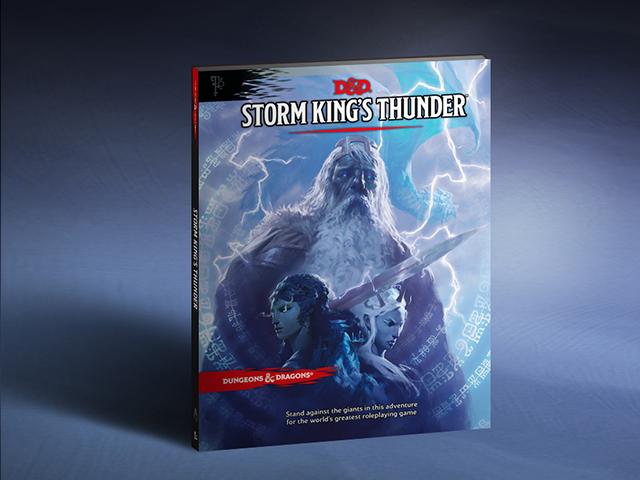D&D 5th Edition is finally coming of age. If you’re a DM just getting into the game (like myself), you have a short time before you hit option overload. The number of quality modules and campaigns being published by WotC and through the DM’s Guild is quickly getting to a saturation point, if you haven’t been working through them already.
As a DM, though, you really want to present the best gaming experience that your players can have. So where and how should you start? With the Starter Kit? With the sweet new Storm King’s Thunder campaign? Or perhaps with something new, original, and creative?
Rather than recommending a resource to you, I want to do you one better. I to help you, Dungeon Masters and Game Masters, to find your own personal game style and to choose accordingly. Here’s how:
The Game Master Matrix
Every Game Master has a different approach to their art. And I believe you can identify it according to two different intersecting spectra:
- Casual to Serious and
- Story Creation to Storytelling
Casual to Serious
As a GM, what tone do you like to set at the tabletop?
Do you prefer your players to be in character the majority of the time? Do you prepare clues for your players on premade, old-looking parchments? Do you spend time picking the right music for battle, the right descriptors for scenery, and the proper monsters for the environment? Then you’d fall in the more “serious” category.
On the other hand, are you comfortable with players cracking jokes and being silly? Are you fine with things taking a completely insane turn, leading to hi-jinx well outside the genre of your chosen game? Do you throw the map out on the table last minute with little to no prep? Then you’re probably more “casual.”
Granted, there is a spectrum between these two poles–and neither is bad! It’s purely a matter of preference. Which one do you tend toward?
Story Creation to Storytelling
As a GM, what’s your approach to the story?
Do you come to the table with a loose framework and a few ideas? Do you like it when players take the reins and shape the world in which their characters exist? Do you tend toward telling players “yes,” sometimes without saying “yes, but…”? If so, you tend toward “story creation.” You enjoy the collaborative aspect of shaping and creating a story.
Do you like to know the end from the beginning? Do you like the sense that your players are uncovering a mystery one step at a time, seeing their role as exploratory and investigative? Are you more than happy telling your players, “No, that’s not a possibility in this situation”? If so you tend toward “storytelling.” You enjoy writing a story for your characters to enjoy and participate in.
As with the Casual-Serious spectrum, this too is a spectrum. You can have a blend of both approaches–and neither is wrong! It’s just a different approach to GMing.
What quadrant do you fall into?
These two spectra intersect, leaving four different quadrants: Serious-Storytelling, Serious-Story Creation, Casual-Story Creation, and Casual-Storytelling. Whatever your style is should determine what adventures you run for your group (with a qualification I’ll note momentarily). Here’s how:
Serious-Storytelling: you, my friend, should be building a world. A deep, detailed world, wherein your players can explore and investigate for hours on end and never reach the depths. Twists and turns all leading to a grand conclusion! Serious storytellers are those who might as well publish their adventure modules, because the storyline is complete. I’d only purchase a module if you don’t have the time at present to do the work of world-building.
Serious-Story Creation: those serious GMs who value collaborative story creation need to focus on loose frameworks. Prewritten sandbox modules would work fine, but you may still feel confined by them. Find a loose framework wherein you and your players can break the rules, push the limits, and create a better story than you ever imagined. Keep in mind that some game systems provide a better environment for this. I personally find FFG’s Star Wars system perfect for this sort of approach.
Casual-Story Creation: these GMs are your low-prep, creative GMs. Don’t bother with modules, long-term plans, or complicated plot lines. Get your Mountain Dew, get a good start, and have some fun! The most you need is a decent quest idea within a relatively formed environment and play. You’re going to have fun regardless.
Casual-Storytelling: these GMs need an easy plug-and-play prewritten module. This is where your more polished adventure modules will work really well. You need to be able to read the thing and then run your players through the thing. Don’t overcomplicate things beyond that.
The Gaming Group Matrix
Now granted, your players may not fit within the same preferences that you have. As a result, your gaming group will also fit within these four quadrants. That said, most gaming groups tend toward their GM’s style after a while. If they don’t, players usually move on to another group.
So here’s the important thing to do and remember:
- Be cognizant of where your players and group fall within this matrix and
- Adjust where necessary.
If they prefer story-telling, but you’re more into story-creation, find a good published sandbox module. You’ll have the structure you like, but they’ll have the freedom they want. It’d work in reverse as well.
If they are casual, but you’re more serious, give them freedom to goof around within the game. But make their actions matter. Let the in-game consequences and results cause them to pause and reconsider their current path. Don’t squash their fun and be combative as a GM, but rather show them a serious approach to cause and effect. See how it affects things at the table.
Or you could always try something different! Adapt to their style and see what happens. You may find you enjoy it more than you expect.
We GM for the players…and for ourselves
Remember, it’s not just about you. You want your players to have a good time. You know that–that’s why you got into this in the first place! But at the same time, don’t forget yourself. It’s important that Game Masters have fun as well. So keep in mind your preferences and do what you can to have some fun yourself.
How about you? Where do you fall on the matrix? How has it cause fun or friction at your gaming table? Sound off on our Facebook page. We’d love to hear from you!
Disclosure of Material Connection: Some of the links in the post above are “affiliate links.” This means if you click on the link and purchase the item, I will receive an affiliate commission. Regardless, I only recommend products or services I use personally and believe will add value to my readers. I am disclosing this in accordance with the Federal Trade Commission’s 16 CFR, Part 255: “Guides Concerning the Use of Endorsements and Testimonials in Advertising.”


A vary between the Serious-Story Creation and the Casual-Story Creation depending on my players and the game system. But above all, I am definitely a Story Creation style GM. I love the players to interact with and alter the world and story I am offering them, then I create on the fly with them. I love being impromptu with my storytelling, living in the moment with the players and characters. Some of my best story arcs we still talk about today have come from random events that the characters focused on so I took off on that tangent with them.
I’m the same way, man. I feel like it makes it more fun for me when there’s a surprise!